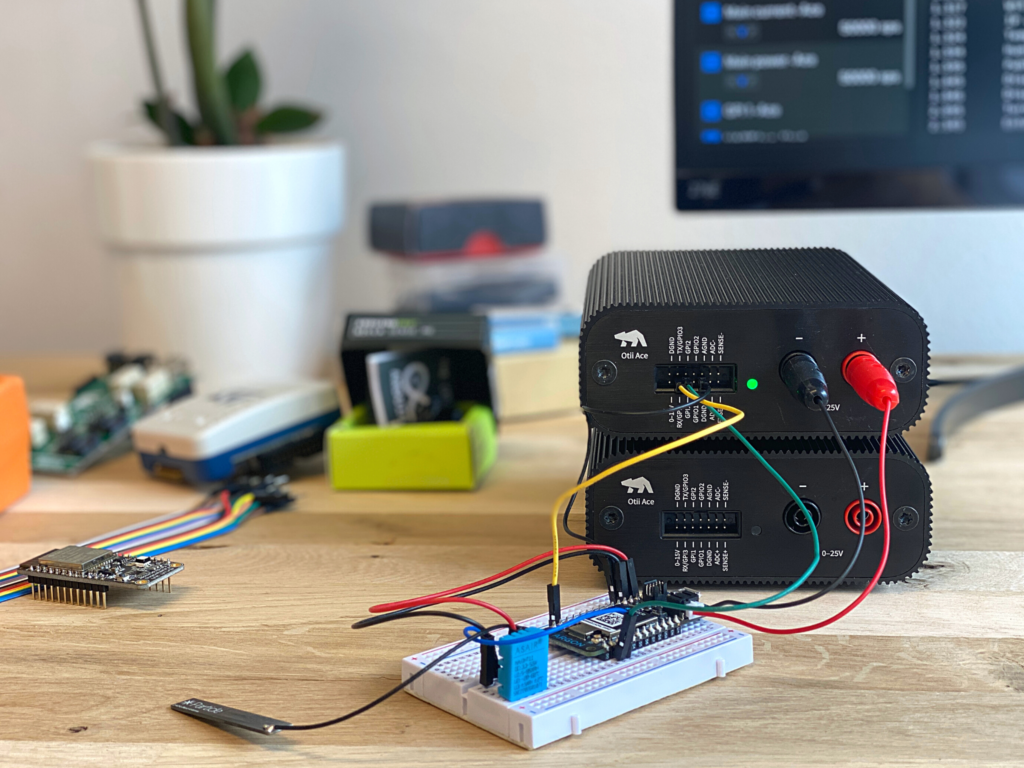Optimizing battery life of LPWAN IoT devices
Optimizing battery life of LPWAN IoT devices
In the previous blog post, we explored the importance of long LPWAN battery life. In this blog post, we will explore the factors that influence battery life in IoT devices and discuss strategies for optimizing power consumption to maximize operational efficiency.
For a successful deployment of IoT devices, it’s essential to effectively manage and consider battery life, given their operation with limited power resources. This entails a comprehensive understanding of the key factors influencing battery life and the implementation of optimization measures to maximize efficiency.

IoT device power consumption
The power consumption of IoT devices significantly affects battery life. Factors like hardware architecture, sensor configurations, and firmware optimization are key. Developers should minimize energy loss caused by leakage current and optimize firmware and software. Efficient algorithms, reducing background tasks, and code optimization all help decrease power consumption.
Implementing power management techniques is essential. This includes adjusting power levels based on network conditions, reducing power during idle periods, and optimizing data processing and filtering algorithms.
Data rate and duty cycle in LPWAN devices
The data rate and duty cycle define the frequency and duration of data transmission in LPWAN devices. Lower data rates and duty cycles reduce power consumption but result in longer transmission times. It is important to strike the right balance between data rate, duty cycle, and application requirements to optimize battery life while ensuring sufficient data throughput.
Network connectivity and protocols
The frequency and size of network connectivity impact power consumption in LPWAN IoT devices. LPWAN networks offer power-saving modes (ex. NB-IoT, LTE-M) and adaptive data rate mechanics (ex LoRaWAN) that improve battery life. The messaging protocol choice affects battery life due to transmission overhead and quality of service. Developers can maximize battery performance by finding the right balance between power efficiency and communication requirements, extending the operational lifespan of IoT devices.
Sleep mode and wake-up interval
Utilizing sleep mode effectively is a key strategy for conserving power in IoT devices. By defining appropriate wake-up intervals and adjusting sleep durations based on the application requirements, developers can minimize power consumption during idle periods, leading to significant battery savings.
Transmission power and range
The transmission power level affects battery life. Higher power increases range but consumes more power. By optimizing transmission power based on environment and range requirements, battery life can be prolonged without compromising communication reliability.
Developers can make informed decisions to optimize power consumption and extend battery life in LPWAN IoT devices by considering and fine-tuning these factors. In the upcoming blog posts, we will explore strategies and techniques for choosing the right battery and implementing optimization measures to maximize battery performance in LPWAN IoT deployments.
In the next article, we will have a closer look at choosing the right battery for IoT devices.
Blog series exploration
Stay tuned as we explore optimizing battery life of LPWAN IoT devices. We’ll analyze the factors impacting battery life, offer guidance on choosing the right battery, and discuss strategies for maximizing efficiency. By implementing the best practices from this series, organizations can optimize their LPWAN deployments, improve battery performance, and extend device lifecycles. The next chapter will be about Choosing the right battery for IoT devices.

Blog series content
- Exploring challenges and strategies for long LPWAN battery life performance
- Optimizing battery life of LPWAN IoT devices
- Choosing the right battery for IoT devices
- Four steps for a successful IoT battery selection
- Profiling different battery chemistries: A case study
For early access to the full series, download our white paper Powering IoT devices now.
Become a member of our community
Gain access to exclusive resources, educational materials, and expert advice to enhance your knowledge and understanding of powering IoT devices and battery testing.